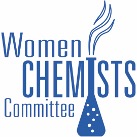Reducing Risk and Uncertainty Associated with Nuclear Waste Processing and Disposal: A Hanford Tank Waste Case Study – Carolyn Pearce, PhD
|
|
View the Zoom Recording HERE.
Download the Event Flier HERE.
About the Speaker
Carolyn Pearce joined Pacific Northwest National Laboratory (PNNL) in 2016 and is a scientist and team lead in the Subsurface Science Group. She directs the PNNL-led US DOE Office of Science supported Ion Dynamics in Radioactive Environments and Materials Energy Frontier Research Center, and leads research programs for US DOE Environmental Management, Office of River Protection, and Richland Limited. She characterizes solutions and minerals relevant to radioactive waste storage and processing, determining reaction mechanisms and kinetics that affect radionuclide stability in waste forms and subsurface environments. Dr. Pearce obtained her B.Sc. and PhD from the University of Leeds, UK, and is Honorary Professor in the Department of Earth and Environmental Sciences, University of Manchester, UK, and Adjunct Professor in the Department of Crop and Soil Sciences, Washington State University.
Abstract
The Hanford site in Washington State, which produced plutonium for the US weapons program, is the most contaminated nuclear site in the nation and is its largest environmental clean-up activity. During weapons production, 56 million gallons of liquid radioactive/chemical waste (sludge, salt cake, and supernatant), with 170 million Curies of radioactivity and 240,000 tons of complex chemicals, was generated. This liquid waste is the primary environmental contamination risk, currently intended to be processed into a glass form for stabilization and to allow its radioactivity to safely dissipate over hundreds to thousands of years. Uncertainty associated with nuclear waste processing and disposal can be mitigated by: (i) characterizing waste chemistry; and (ii) understanding waste form behavior in the environment. A key issue of Hanford tank waste processing and disposal is that, although radionuclides such as technetium are the risk drivers, it is the ‘benign’ dominant elements such as aluminum that dictate the processing limits and uncertainties, given that tank waste is removed on a volume basis. Basic research by the Ion Dynamics in Radioactive Environments and Materials (IDREAM) Energy Frontier Research Center (EFRC) has focused on unravelling complex ion coordination, solvation, pairing with other ions, and cluster formation in these radioactive and highly concentrated chemical environments. The goal of IDREAM is to understand the fundamental mechanisms of aluminum speciation change that underpin solubility, nucleation and precipitation in Hanford tank waste to accelerate safe, cost-effective, and efficient waste processing. Once the waste has been processed, it must be demonstrated that risk driving radioactive elements will be contained in the wasteform for thousands of years until they become safe. Archeological artifacts, analogous to wasteform materials, i.e., glass, that have been left by our ancestors and exposed to the environment for thousands of years can be used to validate and refine predicted wasteform durability.
Questions?
Please contact Elaine Yamaguchi at eyamaguchi08@gmail.com

